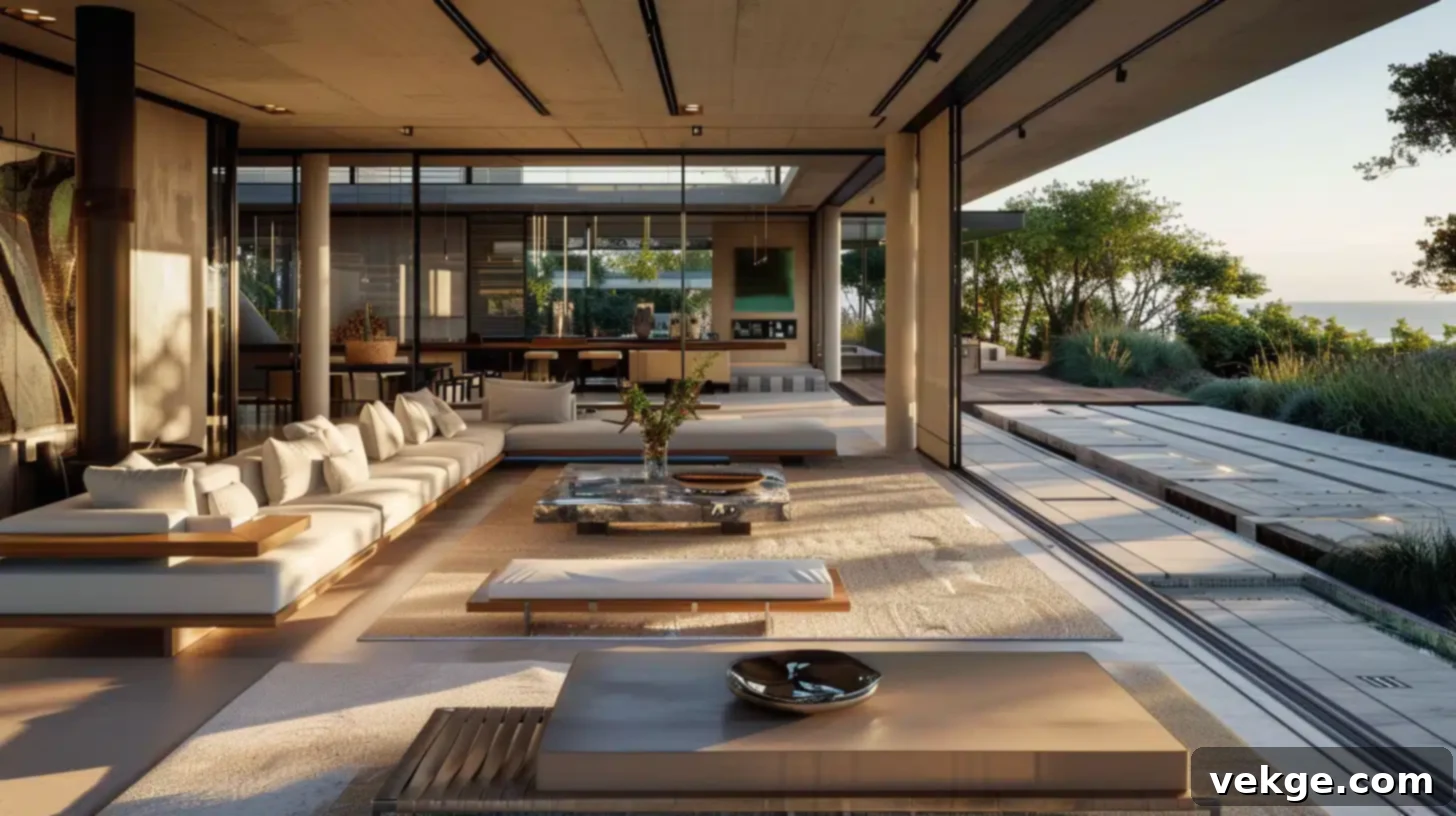Seamless Living: Blurring the Lines Between Indoor and Outdoor Spaces
For centuries, our homes have been defined by distinct boundaries: the robust walls and doors that separated the interior from the exterior. These divisions served essential functions, offering protection from the elements and establishing clear zones for different aspects of life. However, a transformative shift is underway in architectural and interior design. As our appreciation for nature deepens and our understanding of well-being evolves, the rigid divide between inside and outside is gracefully dissolving, giving rise to a more fluid and harmonious interplay between our living spaces and the natural world.
This evolving design philosophy is not merely about aesthetics; it represents a profound change in how we perceive, utilize, and connect with our homes and their surroundings. Architects, interior designers, and homeowners are increasingly embracing the concept of integrated living, where the transition from an indoor sanctuary to an outdoor oasis feels effortless and natural. This innovative approach promises a richer, more engaging living experience, fostering a constant dialogue between the comforts of home and the invigorating embrace of the environment.
The benefits of blurring the boundaries between indoor and outdoor living are manifold and deeply impactful. Firstly, it cultivates a deeper, more intrinsic connection with nature, inviting its rejuvenating elements—fresh air, natural light, and verdant beauty—into our daily lives. This integration significantly enhances our overall well-being, promoting a sense of calm, reducing stress, and boosting mood. Secondly, it creates a seamless flow, effectively expanding the usable footprint of our homes. By integrating exterior areas, we unlock new dimensions of versatility and comfort, transforming patios, gardens, and decks into functional extensions of our indoor environments.
Designing for Seamless Transitions: Unifying Your Living Experience
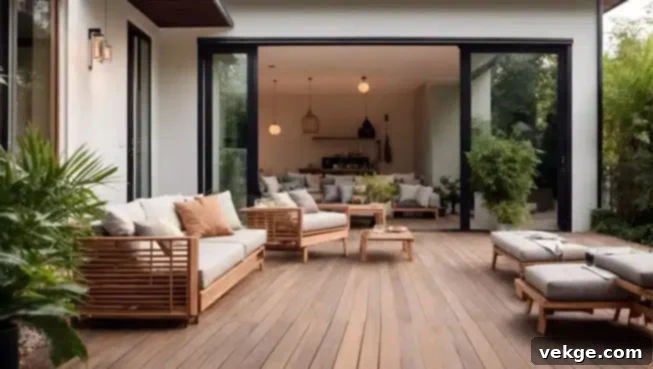
Achieving a truly seamless transition between your indoor and outdoor living areas is at the heart of this design movement. Key architectural elements play a pivotal role in this integration, foremost among them being open floor plans and expansive glazing. By minimizing internal walls and incorporating large windows and sliding or folding doors, homes can achieve an immediate sense of continuity. These features effectively dismantle visual and physical barriers, allowing natural light to penetrate deep into the interior and framing the outdoor landscape as an integral part of the home’s aesthetic, thereby inviting nature’s embrace.
Beyond structural changes, the strategic use of consistent materials and cohesive color schemes is fundamental. When similar flooring materials, such as large format tiles, polished concrete, or natural stone, extend from the living room to the patio, the eye perceives a continuous surface, effortlessly guiding one from one realm to the next. This material consistency can be further reinforced through complementary wall treatments, furniture, and decorative elements. A unified color palette, perhaps drawing inspiration from the surrounding landscape, creates a cohesive aesthetic that strengthens the perception of an expansive, interconnected living space.
Incorporating elements typically found outdoors into interior spaces is another powerful technique for bridging this divide. Living walls, abundant with vibrant, verdant foliage, bring the undeniable beauty and freshness of nature indoors, simultaneously purifying the air and adding a dynamic, organic texture. Similarly, thoughtfully placed indoor water features, whether a small tabletop fountain or a larger built-in installation, replicate the soothing sounds of streams and waterfalls, fostering a tranquil and serene ambiance that echoes the peacefulness of an outdoor sanctuary.
Conversely, extending indoor living functions outdoors flawlessly amalgamates the two realms. Imagine an outdoor kitchen fully equipped with a grill, refrigerator, and ample counter space, allowing for effortless alfresco dining and entertaining. Or picture an outdoor living room, complete with weather-resistant sofas, armchairs, and a coffee table, mirroring the comfort of your interior lounge. These extensions transform exterior spaces into highly functional, comfortable, and inviting home areas, fostering a profound sense of openness and a direct, tangible connection with the natural world, significantly expanding your home’s usable footprint and lifestyle possibilities.
Maximizing Natural Light and Ventilation: Harnessing Nature’s Elements
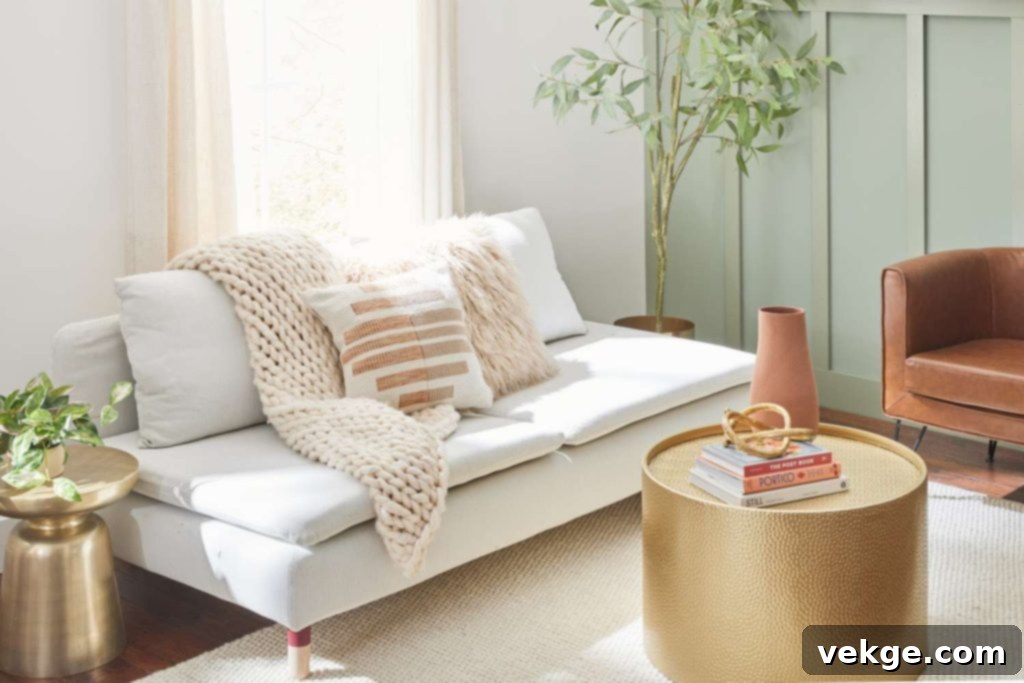
The strategic placement of windows, skylights, and glass doors is paramount not only for blurring the lines between indoors and outdoors but also for maximizing the influx of natural light. Abundant daylight dramatically enhances the sense of openness, vitality, and connectivity within the home. This rich illumination reduces the reliance on artificial lighting during the day, significantly promoting energy efficiency and contributing to a healthier, more vibrant living environment. Natural light has also been shown to positively impact mood, productivity, and overall well-being, making it a critical design consideration.
To take this integration a step further, architectural innovations like retractable walls, bi-fold doors, or large sliding glass panels allow entire sections of a wall to effectively disappear. These dramatic features facilitate a truly seamless transition, allowing the outdoors to flood the interior, instantly transforming your home into a continuous, open-air haven. This flexibility offers homeowners the ability to open up their living spaces entirely on pleasant days, enjoying fresh air and unobstructed views, and then securely close them off when privacy or protection from the elements is desired.
While inviting the sun in is desirable, managing its intensity is equally important. Shading devices such as elegant awnings, robust pergolas, strategic overhangs, or thoughtfully planted deciduous trees provide crucial respite from the sun’s harsh rays, preventing overheating indoors and creating comfortable outdoor spaces. These elements offer incredible versatility, allowing homeowners to modulate light levels, control glare, and create inviting, comfortable spaces that can be enjoyed throughout the day, even in direct sunlight.
Effective natural ventilation techniques are essential for creating a refreshing indoor-outdoor experience and maintaining a healthy indoor environment. Principles like cross-ventilation, achieved by strategically positioning windows on opposite sides of a room to allow air to flow through, and the stack effect, which uses convection to draw warm air up and out, harness the power of airflow. By incorporating design elements that facilitate air movement, such as operable clerestory windows or strategically placed vents, these techniques enhance indoor air quality, naturally cool the home, and minimize reliance on energy-intensive air conditioning systems, further aligning with sustainable living principles.
Creating Outdoor Rooms: Expanding Your Home’s Living Footprint
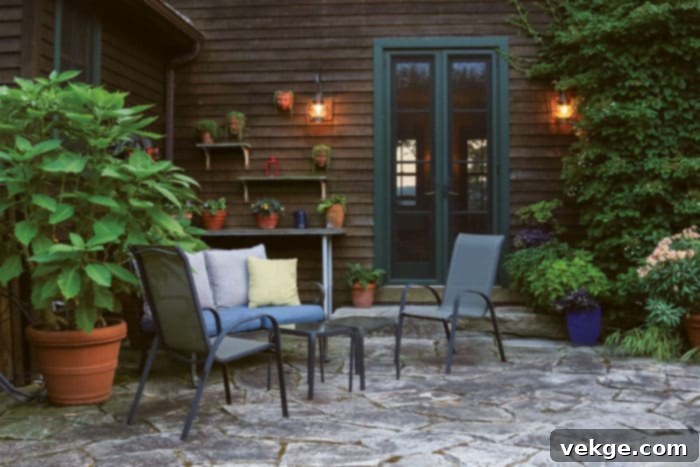
Transforming exterior areas into functional and inviting “outdoor rooms” is a cornerstone of integrated indoor-outdoor living. Structures such as elegant pergolas, charming gazebos, and decorative trellises play a crucial role in defining these spaces. They create a delightful sense of enclosure and intimacy, subtly demarcating areas for dining, lounging, or quiet contemplation. Beyond providing shade and partial shelter, these architectural elements serve as focal points, adding visual interest, depth, and cohesion to the overall landscape design, effectively giving the outdoor space its own sense of identity and purpose.
To truly elevate the functionality and ambiance of these outdoor rooms, incorporating comfortable outdoor furniture and thoughtfully curated accessories is essential. From plush, weather-resistant seating arrangements that invite relaxation, to stylish outdoor rugs that define zones and add warmth, and decorative lighting such as string lights, lanterns, or built-in fixtures that extend usability into the evening hours, these elements are key. Carefully selected pillows, throws, and potted plants further enhance comfort and style, creating inviting spaces that encourage prolonged relaxation, lively conversation, and memorable entertaining, mirroring the comfort and sophistication of indoor areas.
Extending the usability of these outdoor rooms across different seasons requires integrating outdoor heating and cooling options. Cozy fire pits, whether portable or built-in, provide warmth and a captivating focal point for evening gatherings. Patio heaters offer targeted warmth, allowing for comfortable enjoyment even on cooler evenings. For warmer climates, outdoor fans or misters can provide a refreshing breeze, ensuring comfort during hotter months. These amenities ensure that homeowners can savor their integrated indoor-outdoor living spaces and entertain guests comfortably year-round, regardless of the weather.
For the ultimate blend of convenience and outdoor enjoyment, integrating outdoor kitchens and comprehensive entertainment areas is a game-changer. Equipped with high-performance grills, practical refrigerators, ample counter space for food preparation, and perhaps even a pizza oven or a full bar, these versatile spaces enable effortless alfresco dining and entertaining. Complementary features like outdoor sound systems or projection screens create dynamic entertainment zones. This seamless integration fosters a deep sense of conviviality and connection with nature, making outdoor meals and gatherings as sophisticated and comfortable as any indoor event, further enhancing the appeal and value of the home.
Blending Indoor and Outdoor Landscaping: A Symphony of Green
The art of seamlessly blending indoor and outdoor landscaping is crucial for dissolving the traditional divide. Incorporating a variety of indoor plants, from delicate ferns to statement-making living walls, into interior spaces brings the undeniable beauty and vitality of nature indoors. These verdant elements do more than just enhance aesthetics; they purify the air, improve indoor air quality, and promote a profound sense of well-being and tranquility, creating a constant, refreshing connection between the natural and built environments.
Maintaining a visual flow through consistent hardscaping materials is equally important. Using similar, if not identical, flooring materials—such as natural stone, concrete pavers, or composite decking—both indoors and outdoors creates a cohesive visual pathway. This continuity effectively dissolves the physical and perceived boundaries between the two realms, fostering a harmonious and uninterrupted relationship between the constructed elements of the home and its surrounding natural landscape. The repetition of materials acts as a visual bridge, making the transition feel fluid and natural.
Extending indoor color schemes, textures, and design elements into outdoor spaces creates a unified aesthetic transition that reinforces the concept of a single, expansive living environment. If your interior features cool blues and greys, incorporating these hues in outdoor cushions, planters, or even garden art helps to visually link the areas. Similarly, repeating certain architectural motifs or decorative styles from inside to outside reinforces the idea of a cohesive, intentional design that transcends the traditional separation, enhancing both visual appeal and a sense of completeness.
Incorporating dynamic water features and sculptures into both interior and exterior spaces introduces captivating elements that further blur these lines. The soothing, rhythmic sounds of water from an indoor fountain or an outdoor pond create an auditory link, while visually striking sculptures or art installations repeated or echoed in both environments provide a continuous aesthetic thread. This sensory and visual continuity invites the calming presence of the outdoors in, and simultaneously extends the sophisticated ambiance of the indoor space outward, creating a holistic and immersive experience.
Fences: Seamless Integration or Deliberate Separation
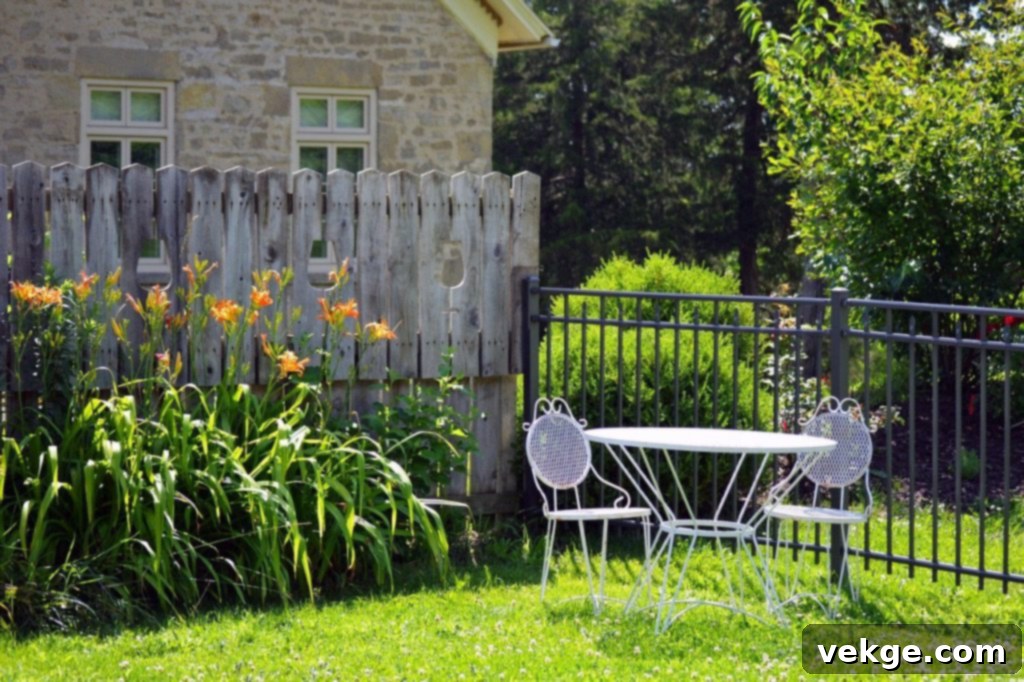
Fences, often perceived purely as physical boundaries, actually play a crucial and multifaceted role in harmonizing indoor and outdoor living spaces. While they undeniably provide security and privacy, their design, material, and strategic placement can either significantly enhance the seamless flow of an integrated environment or deliberately establish clear, functional separations between different zones, depending on the desired effect.
When thoughtfully employed as defining elements, fences can create distinct outdoor “rooms” or delineate specific functional spaces, such as a private dining area or a secluded meditation garden, without compromising the overarching sense of openness and connection to the broader landscape. A well-designed fence can transcend its utilitarian purpose, becoming an architectural feature in its own right, complementing the home’s aesthetic and integrating smoothly into the overall indoor-outdoor design, rather than acting as an abrupt barrier.
The choice of fencing materials and styles is absolutely critical in achieving a cohesive indoor-outdoor aesthetic. Natural materials like warm wood, rugged stone, or elegant wrought iron can blend harmoniously with the surrounding environment, fostering an organic and understated feel. Conversely, modern designs incorporating sleek glass panels or sophisticated metal screens can create a contemporary look that seamlessly complements minimalist architecture and allows for unobstructed views, further extending the visual flow. The material choice should align with the home’s architectural style and the desired atmosphere of the outdoor space.
Integrating fences into existing landscaping and hardscaping elements further enhances their contribution to the overall design. Strategically placed planters teeming with vibrant foliage, small water features that add tranquility, or comfortable seating areas nestled along the fence line can create a profound sense of continuity. These additions soften the fence’s presence, blurring the lines between the built structure and the natural environment. Even the careful placement of the fence itself can influence this flow, perhaps guiding visitors towards a particular garden feature, creating a hidden patio haven, or framing a picturesque view.
To ensure this seamless effect and achieve a truly integrated design, choosing a reputable contractor with proven experience in fence installation and its integration with comprehensive landscaping is paramount. Their expertise can guide proper placement for optimal flow, assist in selecting materials that perfectly complement the existing surroundings, and ensure a finished product that becomes a natural and beautiful extension of your indoor-outdoor living space, rather than a mere barrier.
Sustainability and Energy Efficiency: Designing for a Greener Future
The philosophy of blurring the lines between indoor and outdoor living is inherently aligned with principles of sustainability and energy efficiency. Passive solar design principles are pivotal in this regard. By strategically orienting buildings to maximize sunlight exposure in winter for heating and minimize it in summer for cooling, incorporating thermal mass materials that absorb and release heat slowly, and utilizing shading devices, homes can significantly reduce their reliance on energy-intensive heating and cooling systems, minimizing their environmental footprint.
Further enhancing sustainability involves the judicious use of energy-efficient materials and systems throughout the construction and outfitting of indoor-outdoor living spaces. This includes high-performance, insulated walls and windows (such as low-E glass that reduces heat transfer), energy-efficient appliances, and LED lighting. Opting for locally sourced, recycled, or rapidly renewable materials not only reduces embodied energy but also minimizes environmental impact while maximizing comfort, durability, and functionality for a truly green home.
Incorporating green roofs and vertical gardens goes beyond mere aesthetics; they are powerful sustainable design elements that blur the line between indoors and outdoors. These living systems provide natural insulation, reducing heating and cooling demands. They also improve air quality by filtering pollutants, absorb rainwater to mitigate runoff, and combat the urban heat island effect. Visually, they create lush, inviting connections with nature, contributing to a more sustainable, biodiverse, and visually appealing living environment.
Rainwater harvesting and greywater recycling systems exemplify the harmonious integration of natural cycles within built environments. Collecting and storing rainwater for irrigation, toilet flushing, and other non-potable uses significantly reduces reliance on municipal water supplies. Similarly, greywater systems treat and reuse water from sinks and showers. These practices promote vital water conservation, reduce strain on municipal infrastructure, and foster a more self-sustaining and ecologically responsible living environment, demonstrating a deep respect for natural resources.
Conclusion: Embracing a Unified Living Experience
This article has thoroughly explored the transformative benefits of blurring the lines between indoor and outdoor living spaces. We’ve delved into innovative design techniques that facilitate seamless transitions, highlighted the importance of thoughtful material choices, and underscored the critical role of sustainability in creating holistic living environments. This integrated approach profoundly enhances well-being by fostering a deeper connection with nature, significantly increases the usable space and versatility of our homes, and cultivates a more mindful way of living.
From open floor plans and expansive glazing to the creation of comfortable outdoor rooms and the intelligent integration of landscaping and fencing, every element works in concert to dissolve traditional barriers. By embracing principles of natural light, efficient ventilation, and sustainable practices, we are not just designing houses; we are crafting dynamic, adaptable homes that are intrinsically linked to their surroundings.
Looking ahead, the future of residential design undoubtedly points towards an ever-increasing integration of indoor and outdoor environments. This evolution promises to foster a more harmonious coexistence between humanity and the natural world, leading to living spaces that are not only beautiful and functional but also deeply nurturing, ecologically responsible, and infinitely inspiring. The days of rigid separation are fading, giving way to an exciting era of unified, seamless living.
